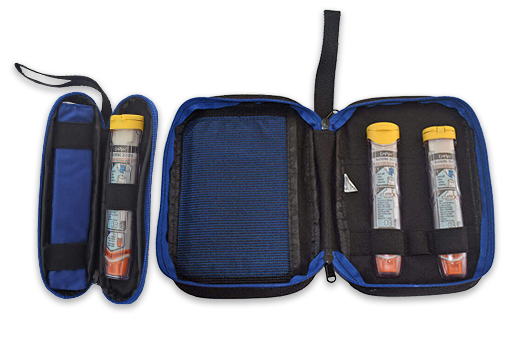Anaphylaxis or severe allergic reaction can be extremely distressing, both for the person experiencing the symptoms and for those wanting to help.
While it’s important to stay calm, it’s also vital to treat anaphylaxis as quickly as possible.1
Here are five tips that may help you act correctly:
1) Identify signs and symptoms1
These are symptoms of severe allergic reaction (anaphylaxis). You may need to use EpiPen® if one or more are present:
- Difficult or noisy breathing
- Swelling of tongue
- Swelling or tightness of throat
- Difficulty talking or hoarse voice
- Wheeze or persistent cough
- Dizziness or collapse
- Young children may become pale or floppy
2) Lie flat
A person with suspected anaphylaxis should lie flat on their back. Pregnant women should be encouraged to lie on their left side. If the person is vomiting, they should lie on their side in the recovery position. If breathing is difficult, the next best thing is to sit on the floor (not on a chair).2
3) Never stand or walk
A person with anaphylaxis should NOT stand, walk, or be held upright, even if they appear to have recovered.2
4) Give EpiPen®3,4
Follow the steps in your ASCIA action plan. If in doubt, give EpiPen®. If you have both severe allergies and asthma, always use EpiPen® before a reliever puffer if you suspect anaphylaxis.
Steps to follow:
- Pull off the blue EpiPen® safety release
- Push the orange end of the EpiPen® Auto-Injector firmly into the outer mid-thigh until you hear or feel a click
- Hold down for 3 seconds
- Phone triple zero (000) for an ambulance
- Phone family/emergency contact
- You may need to use EpiPen® again before the ambulance arrives if there is no response after 5-15 minutes
5) Remember this mantra
Blue to the sky. Orange to the Thigh.
























